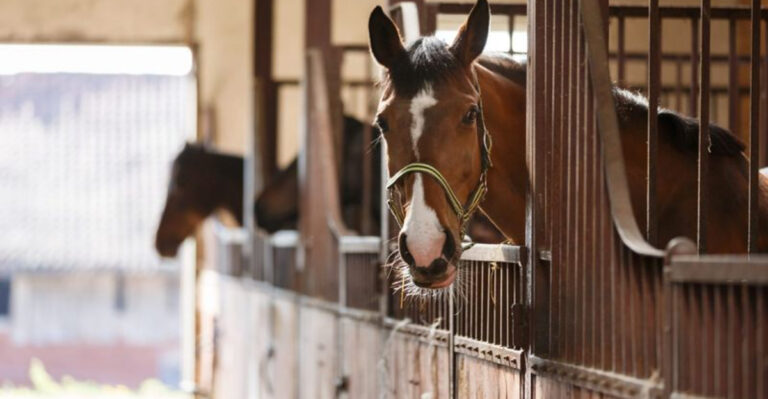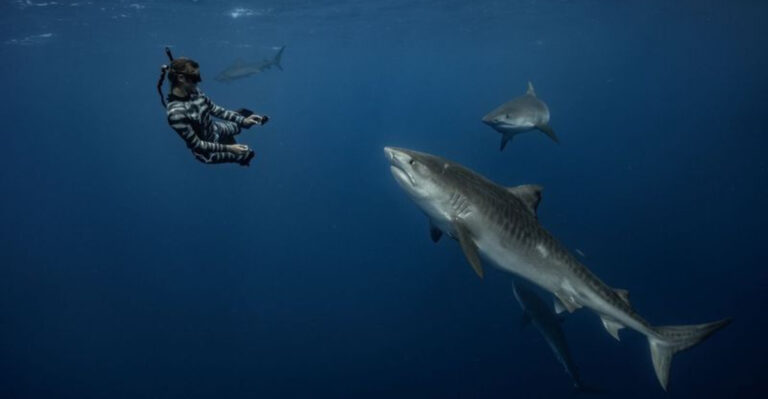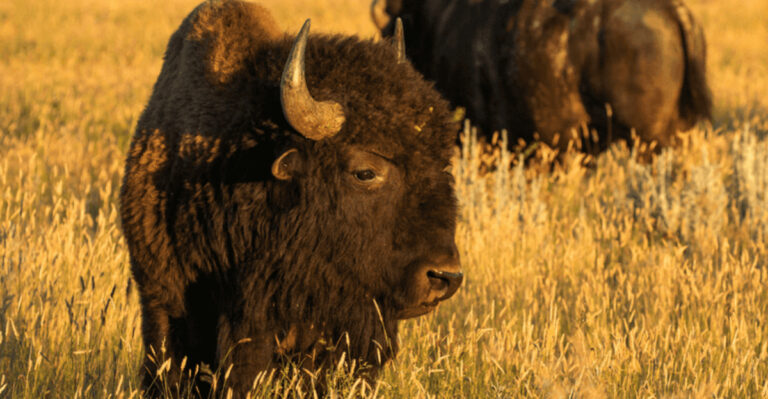15 Endangered Insects You Never Knew Were At Risk

Bugs might seem plentiful, buzzing and crawling everywhere, but many insect species face serious threats to their survival.
From habitat loss to climate change and pesticide use, these tiny creatures are disappearing at alarming rates. While bees often make headlines, many other fascinating insects are silently vanishing without most of us even noticing.
1. Hine’s Emerald Dragonfly
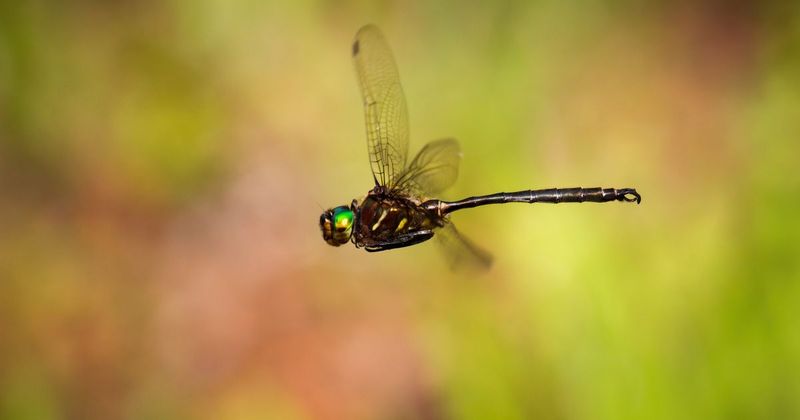
Zipping through wetlands at up to 35 mph, these metallic green speedsters are North America’s most endangered dragonflies. Their specialized habitat needs make them particularly vulnerable to wetland destruction.
Only found in small pockets across the Midwest, these remarkable insects spend up to four years as underwater larvae before transforming into their adult flying form, which lives just a few weeks.
2. American Burying Beetle
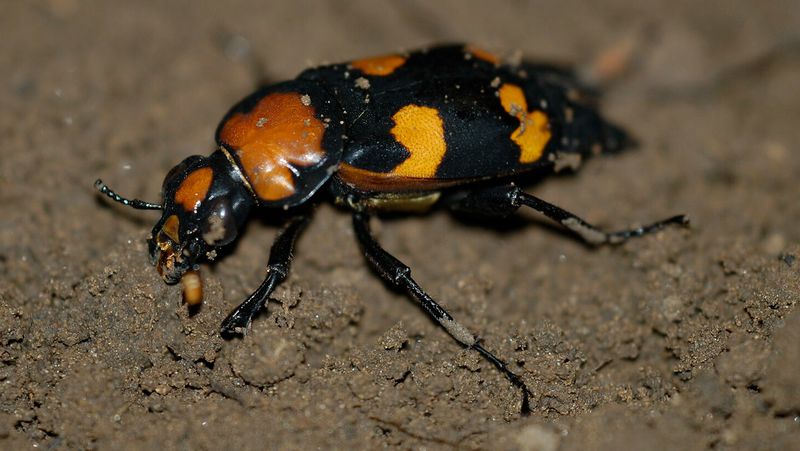
Orange-spotted undertakers of the insect world, these beetles work in pairs to bury entire animal carcasses underground. This bizarre behavior earned them the nickname ‘nature’s morticians.’
Once found in 35 states, these industrious insects now survive in just a handful of isolated populations. Their decline remains somewhat mysterious, though habitat fragmentation and decreased carrion availability are likely culprits.
3. Delhi Sands Flower-Loving Fly
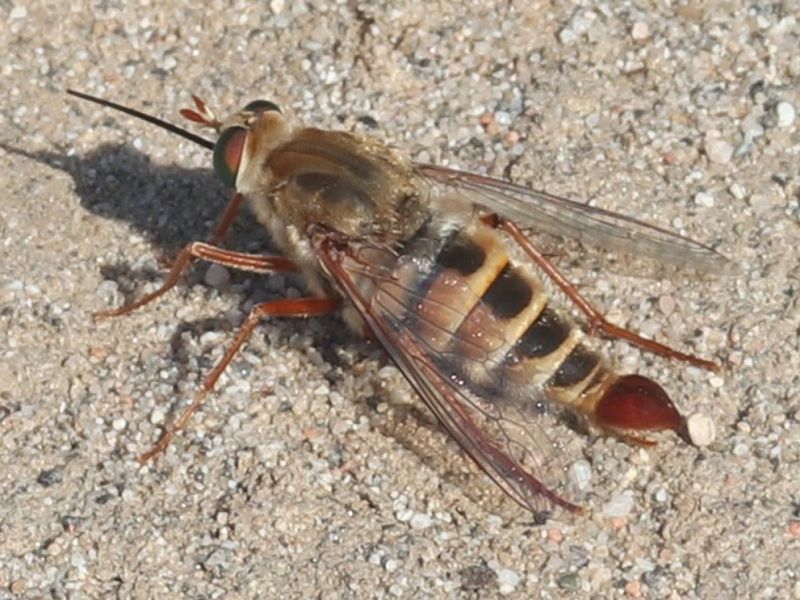
Looking more like a miniature hummingbird than a typical fly, these remarkable insects hover mid-air while sipping nectar with their long proboscis. Found only in a tiny area of southern California, they’re the first fly ever protected under the Endangered Species Act.
Urban development has destroyed 98% of their unique sand dune habitat, leaving them clinging to existence in just a few protected acres.
4. Island Marble Butterfly

Presumed extinct for nearly 90 years before being rediscovered in 1998, these pale butterflies with marbled green undersides represent one of conservation’s most surprising comebacks. Currently, they exist only on San Juan Island in Washington State.
Mustard plants serve as their larval food source, but invasive plants, habitat loss, and hungry predators keep their numbers perilously low despite intensive recovery efforts.
5. Rusty Patched Bumble Bee
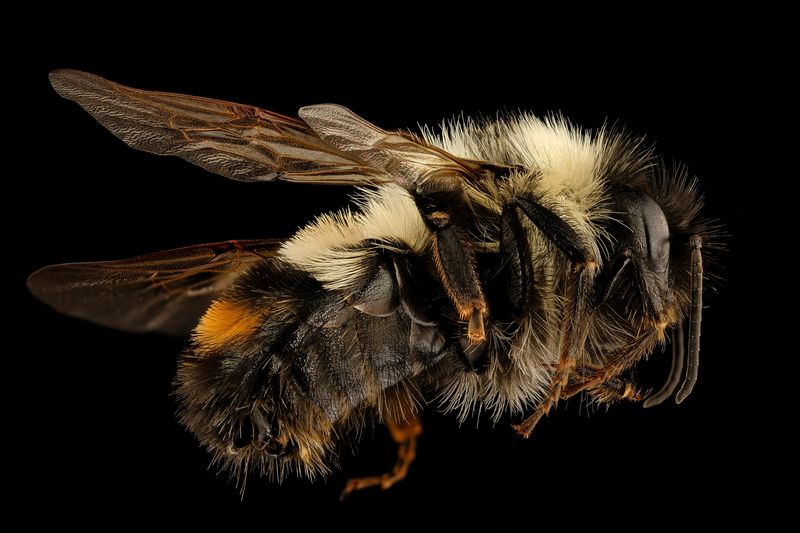
Famous for their fuzzy bodies and distinctive rusty patch on their backs, these social bees have vanished from 87% of their historic range in just two decades. Their rapid decline shocked scientists and led to their emergency listing as endangered in 2017.
Climate change, habitat loss, pesticides, and disease all threaten these important pollinators that once buzzed throughout the Eastern and Midwestern United States.
6. Salt Creek Tiger Beetle

Among the rarest insects on Earth, fewer than 500 of these ferocious predators remain in the wild. Their metallic brown bodies blend perfectly with the mudflats of Nebraska’s salt marshes, where they ambush prey with lightning-fast reflexes.
Despite their small size, they’re nicknamed ‘tigers of the insect world’ for their aggressive hunting style. Each beetle needs about 192 square feet of habitat to survive—space that’s rapidly disappearing.
7. Miami Blue Butterfly

Barely the size of a quarter, these dazzling blue jewels once fluttered abundantly throughout coastal Florida. Now confined to a few remote islands in the Key West National Wildlife Refuge, they’re among North America’s most endangered butterflies.
Hurricane damage, habitat loss, and the decline of their host plants have pushed them to the brink. Their complex relationship with certain ants, which protect their caterpillars, makes conservation especially challenging.
8. Franklin’s Bumble Bee

Occupying one of the smallest geographic ranges of any bumble bee, this species might already be extinct. The last confirmed sighting occurred in 2006 in southern Oregon, despite extensive searches by scientists.
Yellow-faced with a distinctive black abdomen, these bees once thrived in a 13,000-square-mile area of Oregon and California. Their precipitous decline happened so quickly that researchers couldn’t determine the exact cause before they disappeared.
9. Puritan Tiger Beetle
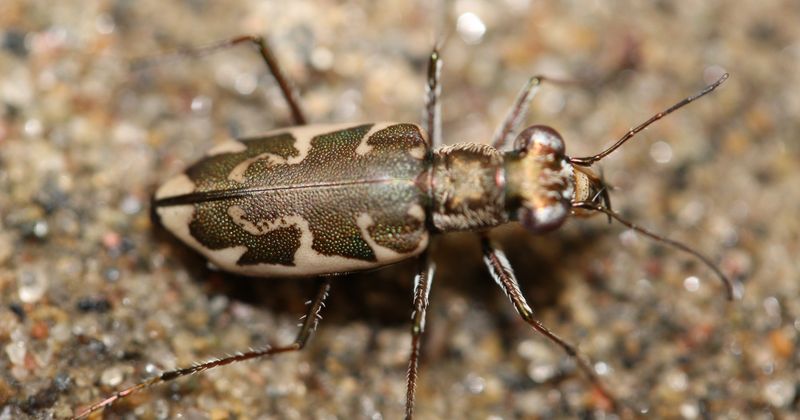
Sandy riverbanks along the Connecticut River and Chesapeake Bay house these speedy predators known for their powerful jaws and tiger-like hunting tactics. Adults can run so fast they need to stop periodically to reorient themselves.
Dam construction and shoreline development have destroyed much of their specialized habitat. Conservation efforts include creating artificial sandy banks where females can lay eggs in the specific soil conditions these beetles require.
10. Monarch Butterfly
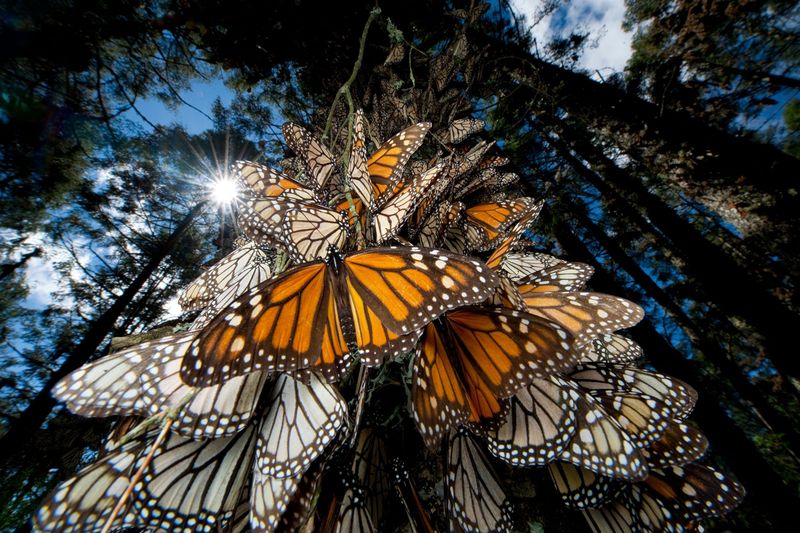
Famous for their extraordinary 3,000-mile migration, these orange-and-black icons have declined by more than 80% in recent decades. Their epic journey from Canada to Mexico represents one of nature’s most spectacular phenomena.
Dependence on milkweed plants makes monarchs particularly vulnerable to agricultural practices that eliminate these ‘weeds.’ Climate change also disrupts their precisely timed migration patterns, while logging threatens their overwintering sites in Mexico.
11. Karner Blue Butterfly

Measuring less than one inch across, these delicate sky-blue butterflies depend entirely on wild lupine plants to survive. Males display vibrant blue upper wings, while females show more subdued blue with orange crescents.
Fire suppression eliminated the natural disturbances that once maintained their lupine habitat. Vladimir Nabokov, the famous novelist, first classified this species scientifically, adding a literary connection to their conservation story.
12. Hawaiian Picture-Wing Flies

Evolution’s masterpieces, these flies display spectacular stained-glass wing patterns unique to each species. Scientists discovered that males perform elaborate courtship dances, positioning themselves to showcase their wing artwork to females.
Many of the 200+ species evolved to depend on specific Hawaiian plants found nowhere else. As these plants disappear due to habitat destruction and invasive species, entire lineages of these remarkable flies face extinction.
13. Peacock Tarantula Wasp
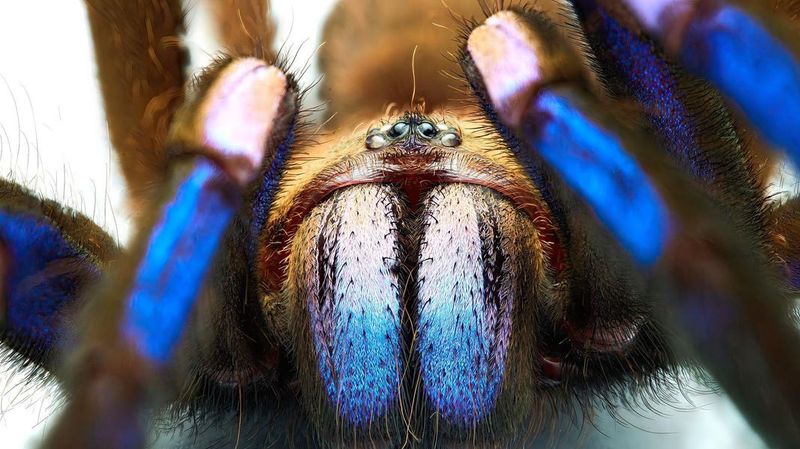
Sporting metallic blue bodies that shimmer like living jewels, these wasps pack one of the most painful stings in the insect world. One entomologist described it as ‘like an electric drill going through your flesh.’
Found only in India’s Western Ghats mountains, they hunt tarantulas as food for their young. Deforestation and climate change threaten their specialized habitat, while their painful sting ironically drives locals to kill them on sight.
14. Lord Howe Island Stick Insect
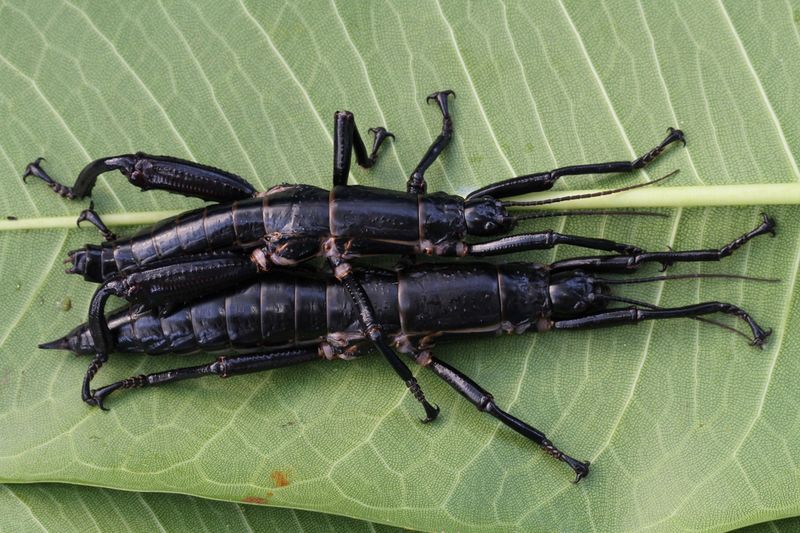
Nicknamed ‘tree lobsters’ due to their massive size and lobster-like appearance, these insects were thought extinct for decades after rats invaded their tiny island home. In 2001, researchers discovered 24 survivors clinging to a single bush on a remote sea stack.
Growing up to six inches long, they’re among the rarest insects alive. A captive breeding program now aims to save this species that survived 80 years in what might be the most precarious habitat on Earth.
15. El Segundo Blue Butterfly
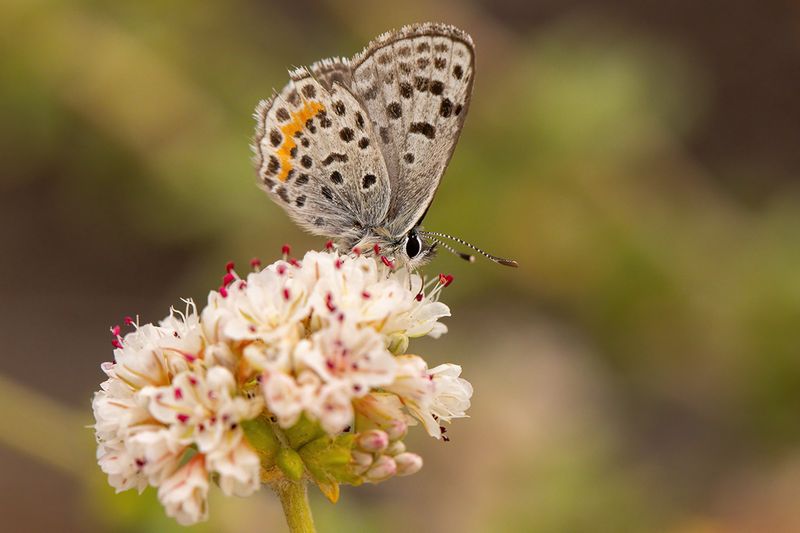
Against all odds, these tiny butterflies survive in the shadow of one of the world’s busiest airports. Their entire global range spans just a few acres of coastal dunes near Los Angeles International Airport.
Completely dependent on seacliff buckwheat plants, these dime-sized butterflies have lost 99% of their historic habitat to urban development. Conservation efforts include carefully restoring native plants along narrow strips between runways and beaches.

